The 25th episode of Sri Ramanin Padhayil began with below verse:
Rama Avataram is not only for the Sadhu Samrakshan and Dushta Nigraham but also to show all the Human Beings how to keep up the Dharmams. Rama has established many Samanya Dharmas, but among them all, the top most, is how to keep up the Promises, safeguard the Satyam.











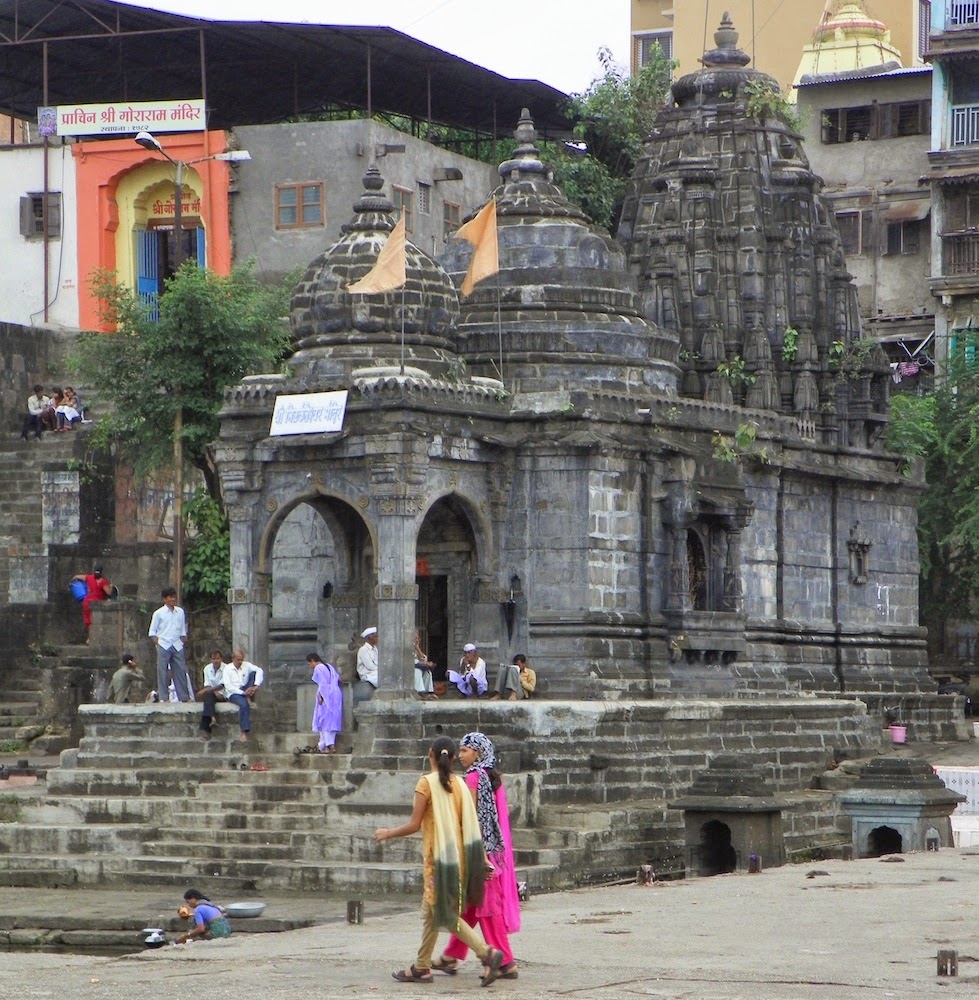
Kumbhmela is held here once in 12 years along with four other cities in India (the other places being Haridwar, Allahabad and Ujjain). The ashes of Gandhiji were dropped in Ramkund after Gandhiji passed away on 30th January 1948. A holy dip in this sacred kund is considered very pious. It is the spot from where the river Godavari turns to right at an angle of 90 degrees.












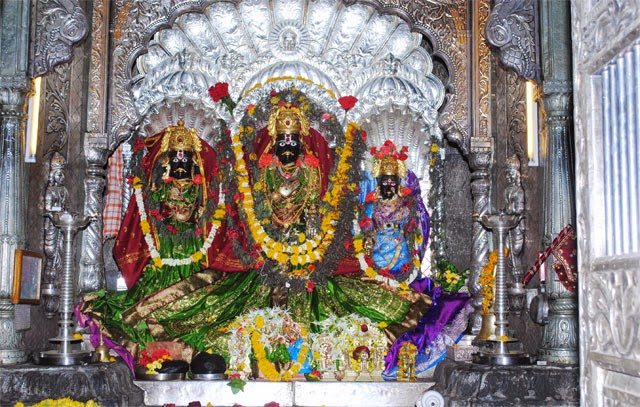
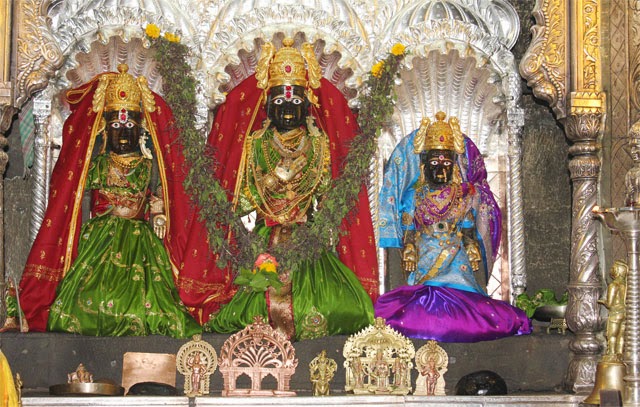
After the entrance you will step into a long varanda (or pillared corridor) at the starting of which is Hanuman's black Idol facing exactly straight to the sanctum sanctorum. This pillared structure is separate then the main temple and is constructed just in-front of it. There are total 40 pillars which are said to set because there are 40 shloka's of Shri Hanuman (i.e. Hanuman Chalisa). There is nothing else inside this structure except the Hanuman Idol positioned in start and the pillars which total counts to 40. Its an open architecture from the sides i.e. no closed walls. You pass through this and then will take steps to the main deity temple which is on the raised platform. There are total 14 steps to reach the temple door, 14 because Shri Ram spent 14 years in exile. All three gates of this temple has exactly 14 steps. The architecture is very much similar to of Trimbakeshwar. As I mentioned earlier most of them are following same pattern, i.e. 3 dome structure one being the tallest which houses the main deity and one medium size which is the front portion/space of the sanctum sanctorum and the smallest in the front i.e. of the entrance door. The fortified wall has pillars too which total counts to 96. On the back side of this temple is a Lord Ganesh idol with a stone platform just enough to enclose this Idol. No separate guide or information brochure available, but it appearance is too aesthetic similar to Trimbakeshwar. This temple is thronged during Hindu festivals like Ram Navami etc and probably the only temple (there is one more) where Lord Ram is enshrined in black stone. The Idols are self emerged from the Godavari and since it was black in color so the temple was named as KalaRam.

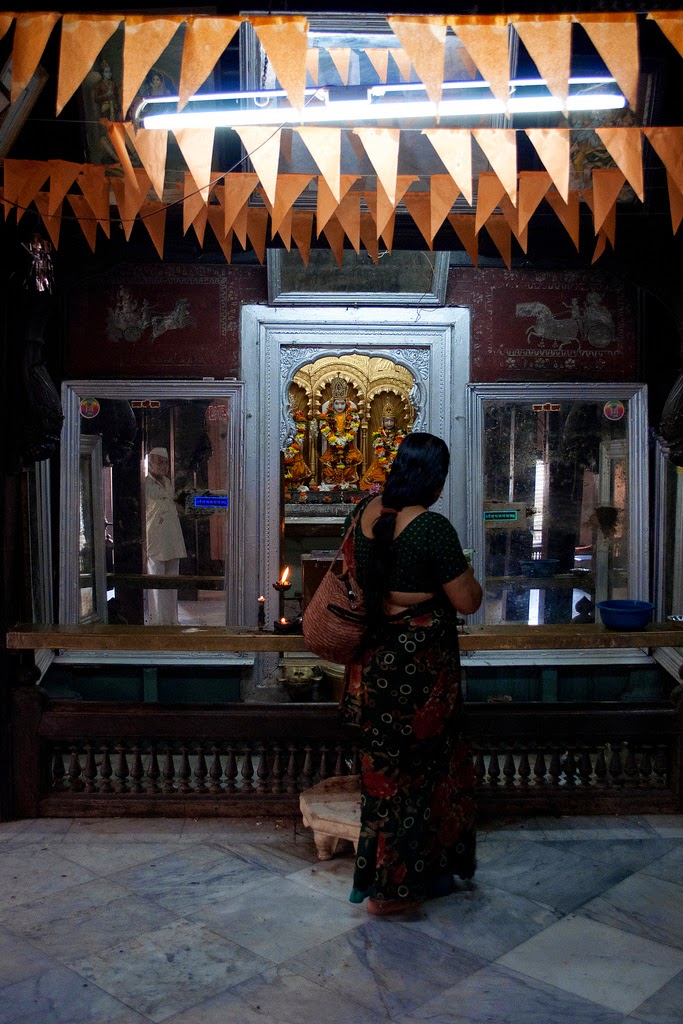
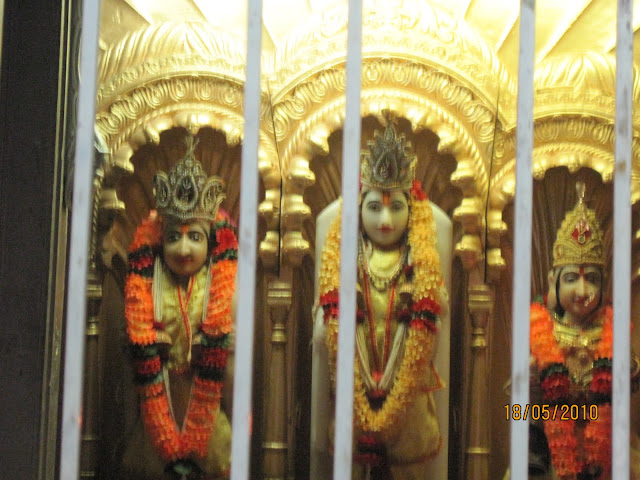
Tapah Swadhyaya Niratam,Tapasvii Vaag Vidaam Varam,
Naradam Paripapraccha, Valmiki Muni Pungavam
Rama Avataram is not only for the Sadhu Samrakshan and Dushta Nigraham but also to show all the Human Beings how to keep up the Dharmams. Rama has established many Samanya Dharmas, but among them all, the top most, is how to keep up the Promises, safeguard the Satyam.
Ramkund:
The 'Ganges' of the south, Ramkund in the sacred river Godavari, draws countless pilgrim every year. As the names says it is a Kund [pond] on the river Godavari in Panchavati where Lord Ram is said to have taken bath. It is the place where one immerse the mortal remains [Asthi] and is said to be absorbed in the river quickly. It is also the place where according to Hindu rituals one performs Shraddham forf their ancestors.











Kumbhmela is held here once in 12 years along with four other cities in India (the other places being Haridwar, Allahabad and Ujjain). The ashes of Gandhiji were dropped in Ramkund after Gandhiji passed away on 30th January 1948. A holy dip in this sacred kund is considered very pious. It is the spot from where the river Godavari turns to right at an angle of 90 degrees.
Kalaram Mandir:
Its Ram temple and named KalaRam ("Kala" means Black). The temple is built in the remembrance of the exile period of Ram during which his complexion became dark. This is the only biggest temple of Lord Ram in Nasik and is built by Sardar Odhekar of Peshwas with black stones brought from Ramshej 200 years back. It took 23 lakhs and around 2000 workers to build this temple in 12 years. The Apex of the temple is made up of 32 tons of Gold which is said to be gifted by Devi Aahilliya. Its a massive temple from outside and fortified with 15-20 feet wall. For the construction no cement is being used there was only three ingredients (choona, malaai and gur) used to clay the stones together. Photography was strictly prohibited though you can carry camera and mobile inside the temple. Since the Lord Ram's Idol is black here so does of Shri Hanuman.













After the entrance you will step into a long varanda (or pillared corridor) at the starting of which is Hanuman's black Idol facing exactly straight to the sanctum sanctorum. This pillared structure is separate then the main temple and is constructed just in-front of it. There are total 40 pillars which are said to set because there are 40 shloka's of Shri Hanuman (i.e. Hanuman Chalisa). There is nothing else inside this structure except the Hanuman Idol positioned in start and the pillars which total counts to 40. Its an open architecture from the sides i.e. no closed walls. You pass through this and then will take steps to the main deity temple which is on the raised platform. There are total 14 steps to reach the temple door, 14 because Shri Ram spent 14 years in exile. All three gates of this temple has exactly 14 steps. The architecture is very much similar to of Trimbakeshwar. As I mentioned earlier most of them are following same pattern, i.e. 3 dome structure one being the tallest which houses the main deity and one medium size which is the front portion/space of the sanctum sanctorum and the smallest in the front i.e. of the entrance door. The fortified wall has pillars too which total counts to 96. On the back side of this temple is a Lord Ganesh idol with a stone platform just enough to enclose this Idol. No separate guide or information brochure available, but it appearance is too aesthetic similar to Trimbakeshwar. This temple is thronged during Hindu festivals like Ram Navami etc and probably the only temple (there is one more) where Lord Ram is enshrined in black stone. The Idols are self emerged from the Godavari and since it was black in color so the temple was named as KalaRam.
Ramaya ramabhadraya ramachamdraya vedhase
Ragunathaaya nathaya seetaya pataye namaha
GoreRam Mandir:
As the name says "Gore" (fair) the Idol inside is of Lord Rama fair in color. This temple is not a conventional one but resides inside a apartment like structure. The peculiarity of this temple is that it is made up of complete wood i.e. only the portion which shrines Lord Ram along with Laxman and Devi Sita. This is around 300 years old and the wood is still intact and has retained its strength. This was built to commemorate Lord's return from exile after killing the daemon Ravana and rescuing Devi Sita. Lord was resurrected as King and Rajya Abhishek was carried out. The process has made his complexion fair from dark so the Idol was made white in color and thus named the temple as Gore Ram.





0 comments:
Post a Comment